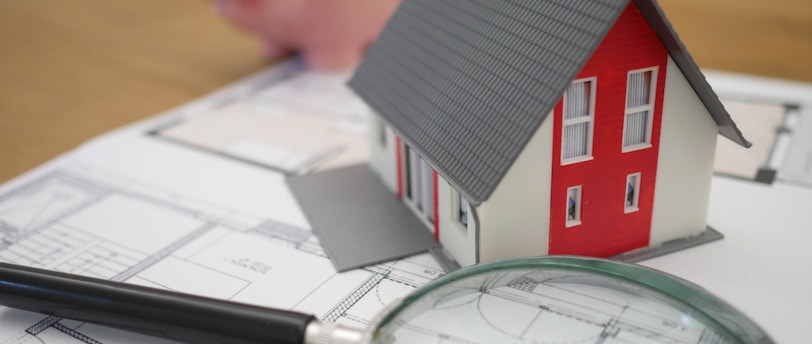Transforming Property Investment Decisions with Cutting-Edge Technology
We work with property investors to help them make better investment decisions. With the use of Drone tech, AI, 360 Degree Scans
AERIAL PHOTOS360 PHOTOGRAPHY INVESTMENT REAL ESTATEPROPERTY SCANSROOF INSPECTIONS
Property Scans
5/4/20255 min read


Introduction to Technology in Real Estate Investment
The real estate investment landscape has witnessed a significant transformation in recent years, primarily driven by advancements in technology. Property investors are now leveraging innovative tools such as drones, artificial intelligence (AI), and immersive imaging to enhance their decision-making processes. These cutting-edge technologies not only streamline operations but also enable investors to make more informed choices, ultimately leading to better investment outcomes.
Drones, for example, play a pivotal role in property investment by offering unparalleled aerial views and insights. They provide property investors with the ability to survey large areas quickly and efficiently, capturing high-resolution images and videos. This aerial perspective facilitates comprehensive assessments of properties and their surrounding infrastructure, which are essential factors in determining a property’s value and potential for appreciation.
Moreover, AI technology is revolutionizing the way property data is analyzed. By processing vast amounts of information, AI algorithms can identify trends, predict market movements, and assess risk levels associated with specific investment opportunities. With the help of data analytics, investors can gain actionable insights about buyer behavior, pricing strategies, and neighborhood dynamics, significantly improving their investment strategies.
Immersive imaging, including virtual reality (VR) and augmented reality (AR), offers a unique approach to property evaluation. These technologies allow investors and potential buyers to explore properties in a virtual environment, providing an interactive experience that transcends traditional methods of viewing listings. Immersive imaging enables users to visualize spaces in 3D, enhancing their understanding of a property's layout and features. This visual engagement not only aids in decision-making but also enables investors to showcase properties more effectively to prospective buyers or tenants.
In summary, the integration of drones, AI, and immersive imaging is reshaping the real estate investment sector. By harnessing these technologies, investors can optimize their decision-making processes, ensuring they are well-informed and equipped to navigate the complexities of property investments.
The Power of Drones in Property Assessment
The integration of drones into property assessment has revolutionized how investors evaluate potential investments. Drones equipped with high-resolution cameras and advanced sensor technology offer unparalleled aerial views of properties, providing insights that are often impractical to achieve through traditional assessment methods. With their ability to cover large areas quickly and efficiently, drones facilitate comprehensive property evaluations that would otherwise be time-consuming and labor-intensive.
One of the primary advantages of utilizing drones in property assessment is their capacity to identify land features and topographical nuances that may affect the valuation or functionality of a property. For instance, a drone can capture images that reveal the slight undulations of a landscape or the presence of natural resources, such as water bodies or wooded areas, which are important considerations for developing or managing a property. Moreover, drones can access hard-to-reach locations, giving investors a more holistic view of potential sites.
Case studies highlight the transformative impact of drone technology on property assessments. In one example, a real estate developer utilized drones to survey a large tract of land intended for a new housing development. The aerial footage allowed the developer to visualize the entire site, identifying obstacles like existing structures and natural features that could complicate construction. The insights gained from the drone imagery led to better-informed decisions regarding the layout and potential modifications to the development plan.
Furthermore, drones can conduct site surveys with remarkable speed and accuracy. Collecting data such as measurement, distance, and elevation, they minimize human error and enhance the reliability of information used in property evaluations. As investors increasingly recognize the benefits of drone technology, it is clear that aerial views and data derived from drones will play a pivotal role in shaping informed property investment decisions, ultimately driving effective outcomes across the industry.
Utilizing AI for Data Analysis and Predictions
Artificial Intelligence (AI) plays a crucial role in revolutionizing property investment decisions through advanced data analysis and predictive analytics. By harnessing the power of AI, investors can evaluate extensive datasets that include historical sales data, demographic information, neighborhood dynamics, and various economic indicators. These elements collectively form a robust framework that enhances the precision of market predictions, enabling investors to make informed decisions.
One of the primary advantages of integrating AI into property investment is its ability to quickly analyze trends from historical sales data. The use of algorithms allows investors to identify patterns and fluctuations in property values over time, facilitating a deeper understanding of when to buy or sell. For instance, AI can detect seasonal trends or economic shifts that may affect property prices, thereby providing actionable insights that are pivotal for maximizing investment returns.
Besides historical data, AI tools can aggregate and analyze insights from neighborhood dynamics, such as crime rates, school ratings, and proximity to amenities. These factors significantly impact property desirability and investment potential. By assessing these variables, AI empowers investors to pinpoint undervalued areas with strong growth potential and avoid markets that may be declining.
Furthermore, AI's capacity to evaluate economic indicators—such as employment rates, inflation, and interest rates—further enriches an investor's decision-making process. By synthesizing this information, AI can forecast market trends, enabling investors to anticipate shifts before they occur. This predictive capability is invaluable, particularly in volatile markets where timely decisions can mean the difference between profit and loss.
In summary, the integration of AI in property investment enhances data analysis, presenting investors with comprehensive insights necessary for strategic decision-making. The ability to harness multiple data sources not only uncovers trends but also fortifies investment strategies that respond dynamically to market changes. This technological advancement represents a significant shift in the landscape of property investment, paving the way for data-driven success.
The Impact of 360-Degree Photos and Videos on Decision Making
In recent years, immersive imaging techniques, particularly 360-degree photos and videos, have revolutionized the property investment landscape. These advanced visual tools allow potential buyers and investors to engage with properties in a manner that traditional photographs cannot replicate. By providing a comprehensive view of a space, 360-degree imaging facilitates virtual walkthroughs, which can significantly enhance the overall viewing experience.
As prospective buyers navigate a property through a virtual tour, they can explore every nook and cranny without the limitations of physical presence. This capability not only saves time and resources for both buyers and sellers but also promotes a more thorough understanding of the property's layout and features. With the high-resolution images and interactive elements that accompany 360-degree views, investors can virtually step inside, inspect details closely, and get a true sense of the atmosphere, all from the comfort of their own homes or offices.
The ability to engage with a property in this immersive way fosters deeper visual engagement. This engagement is instrumental in creating a sense of familiarity with a space, which can greatly influence decision-making. When buyers can virtually walk through the entire property, their level of confidence in making investment choices increases. They are less likely to rely solely on written descriptions or static images, which can often omit critical elements of the property’s appeal or flaws.
Moreover, the integration of 360-degree photos and videos sets a new standard for transparency in property presentation. As buyers become accustomed to these digital experiences, they are likely to feel more empowered, informed, and confident in their investment decisions. Overall, incorporating cutting-edge technology such as immersive imaging can lead to more assured choices, ultimately shaping the future of property investment.
Revolutionizing the way properties are marketed. With combination of onsite photography and AI we provide affordable services with personalized customer service.
info@propertyscans.net
© 2024. All rights reserved.


